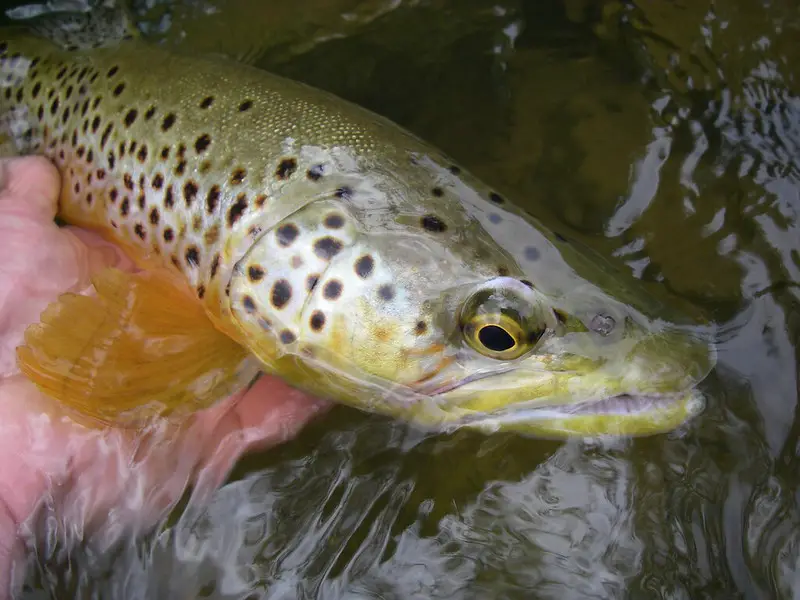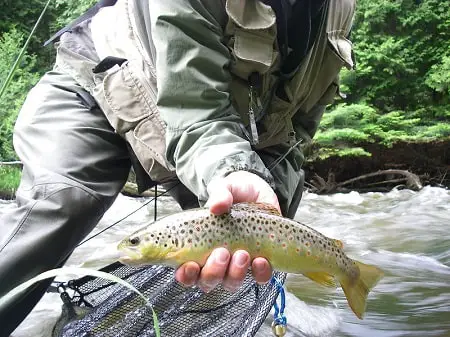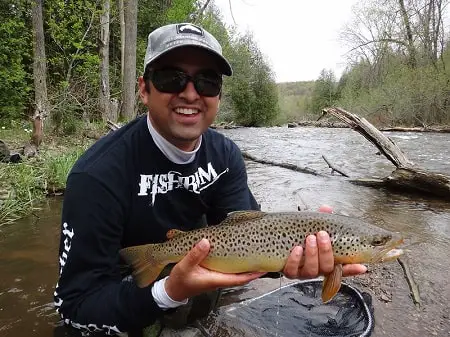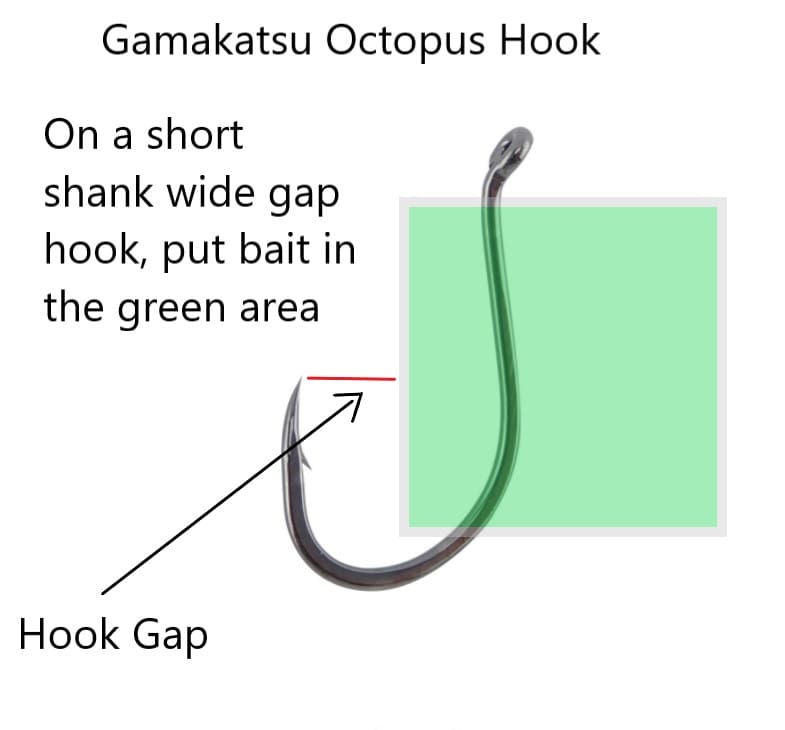Trout Fishing With Corn: A Guides Honest Opinion On Corn

Let me begin by stating that I have extensive experience as an angler and guide in trout fishing, which includes testing many different types of bait over 37 years. I also have experience using corn as bait for trout in various conditions for wild and stocked trout.
I will share my honest opinions about trout fishing with corn-based on my real-life experience and comparisons of fishing with corn for trout versus other baits.
So, is corn really as good as they say it is? Is corn going to help you catch more trout? Should you use corn when trout fishing? And, lastly, do top guides use corn for trout fishing?
Despite what some anglers and guides will tell you, the simple No-BS answer to all questions is NO!
Corn is a low-percentage bait, and although some trout will eat a piece of corn on a hook, there is no proof it will be more effective than another better bait.
Corn As Bait For Trout?

Corn that you eat can be used as bait for stocked and wild trout.
Corn can become even more effective for trout when combined with other attractants or scents.
Is Corn Effective For Trout Fishing?

Despite their reputation for being intelligent, trout are opportunistic feeders and will often put all kinds of objects in their mouths that are not edible. Corn is no exception.
The faster the water, the faster the trout needs to make a split decision and grab things; therefore, corn may be effective in faster water.
While other articles and anglers may praise the effectiveness of corn as a trout bait, it’s important to note that I’ve caught trout on candy, bubble gum, marshmallows, string, tinfoil, sponge, bark, paper, and even a piece of styrofoam ripped off a coffee cup. But that doesn’t mean any of these should be used for bait.
Preferred Corn for River Trout
Some anglers prefer fresh corn, some prefer frozen or canned corn, and some swear by creamed corn. Honestly, in my experience, it’s all the same to the trout.
Hooks And Hooking Your Corn

If you are going to use corn for bait, at least use a hook that a guide would use.
Guides are very picky with the hooks that they use.
Some hooks will hook and penetrate better on the hook set, some are even better for self-hooking the trout, some hooks hold the trout on better, and some do all of these things.
Avoid using treble hooks, as they can cause unnecessary harm to fish and are challenging to remove. Instead, opt for high-quality hooks with high hooking and holding percentages, such as Raven Specimen Hook or Gamakatsu Octopus hooks in sizes 8, 10 or 12.
This video shows trout grabbing baits and not getting hooked, which happens when using the wrong hook.
Hook Size: Your hook size should match the size of the bait. So for a single piece of corns, I’d recommend a size 12 or size 10.
Is Corn Harmful to Fish?
Corn is considered harmless to both fish and humans. Corn is safe for trout and is considered a nutritious food source for fish, making it a popular ingredient in fish feed. Many fish feed manufacturers opt for corn as an affordable substitute for fish meal. Its cost-effectiveness and availability make it a preferred choice for raising fish.
Comparing Corn and Other Baits
This is where I set myself aside from most other articles and all those so-called experts recommending corn to catch trout.
While corn will catch stocked trout, and maybe some wild trout, it is actually a very poor bait, and anyone who tells you corn is a good bait for trout doesn’t understand how trout feed or what makes a good baits.
And guys, I have trained many guides, I’ve also fished with many guides, and I know plenty of guides, some of them suck… Just because someone calls themselves a guide doesn’t mean they are good or knowledgeable. So if a guide tells you to use corn, he is uneducated or probably wants you to catch fewer trout so there is more for him.
So why do I hate corn so much?
You are far better off using high-percentage baits that are proven to be effective for even picky fish and for wiser cautious big wild trout.
Good baits like worms, minnows, leeches, and grubs will entice more trout to bite. Equally important is they entice trout to hold on, which gives you the best chance of landing that trout.
What anglers do not understand is that just because they catch a few trout on corn, it doesn’t mean they wouldn’t have caught the same amount of trout, plus ten times more on a high-percentage bait.
Based on my testing, corn has NEVER been more effective than my high percentage baits that I discuss on my page: Best Baits For Trout.
Do Trout Guides Use Corn To Catch Trout?
Good trout guides DO NOT use corn as bait! Trout fishing with corn would limit their client’s ability to catch the maximum amount of trout possible, which goes against what top trout guides want for their customers.
If a trout guide pulls out corn on your trout trip, he doesn’t like you!! I’m serious… Or he simply sucks as a guide!! In which case, you need to find a better guide.
Conclusion
Yes, I have seen the slit-open bellies of trout full of corn. It still doesn’t convince me since they are likely freshly stocked trout that are dumber than a brick, and you could throw in little balls of bread and they would eat that too.
So, is corn really as good as they say it is for catching trout? The real answer is No! Not even close.
Is corn going to help you catch more trout? Although you can catch trout on corn, there are far better baits that will help you catch far more trout.
Should you use corn for trout fishing? If you want to make it tougher for yourself or when no other bait is available to you, then sure, use corn. Otherwise, it makes zero sense to use a less effective bait so you should not use corn for bait.
Tight Lines
Graham

AMEN!! Well said Graham!
I guide and fish on the White River in Arkansas where a large percentage of guides and “guides” use corn as bait. My clients ask all the time how I know when to use corn and my answer is simple: I don’t use it!
As a tackle manufacturer (XFactor Tackle) and a guide, the idea of using corn as bait is so ridiculous I honestly don’t even know where to start sometimes. Do I need to also keep a can opener under my seat? Absurd!
Thank you for putting it in writing and setting the record straight =)
Hey Jeff,
I haven’t met a guide yet that uses corn, or is willing to admit it.
Graham